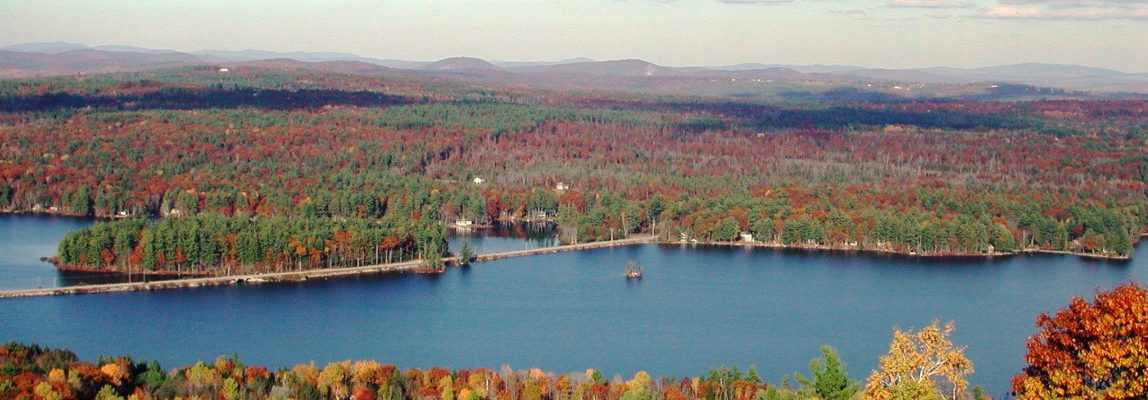by bill monroe • mpa board member
Most readers will know that the Lake Environmental Association (LEA) is an essential partner to the MPA in the pond protection process. We literally could not do it without their help and the MPA encourages you to support both organizations. Amongst other important duties, LEA monitors the water quality in over 40 lakes in the region, including Moose Pond.
What does LEA measure?
- LEA is looking for the following:
- Water clarity
- Water temperature and dissolved oxygen levels
- Phosphorus and chlorophyll-a levels
- pH, alkalinity, conductivity, and color
The trends found here are important for monitoring the long-term health of Moose Pond.
Why do they measure what they measure?
Water clarity: Clearer lakes are generally healthier lakes.
Temperature and Oxygen: The temperature profile demonstrates lake stratification and can also indicate whether there is a suitable habitat for cold water fish. The oxygen profile helps determine biological activity and whether or not the lake is at risk for internal phosphorus recycling.
Phosphorus (the nutrient that controls algae growth) and Chlorophyll-a (the green pigment found in plants): In both cases less is better! They have specific techniques to determine whether or not phosphorus is being recycled into the upper waters from the sediments. More phosphorus means more algae, which is not good.
pH, Alkalinity, Conductivity, and Color: All of these statistics reflect the general health of the water – very similar to a swimming pool water sampling program.
What were the statistics for Moose Pond last season?
The below were pulled from the mid-season report which was presented at the MPA annual meeting. Full 2022 results are still being compiled.
- Middle Basin: Water clarity is within the high clarity range, with the average clarity value less than the Middle Basin’s long-term average. Total phosphorus concentrations are within the moderate range, with the averaged total phosphorus concentration higher than the Middle Basin’s long-term average. To date, we have only 1 chlorophyll data point. This chlorophyll reading was obtained in late May and was within the moderate chlorophyll range.
- North Basin: Water clarity in the North Basin is within the moderately clear range, with the average clarity value near the North Basin’s long-term average. Total phosphorus concentrations are within the moderate range, with the averaged total phosphorus concentration higher than the long-term average. The chlorophyll reading obtained in late May was within the low chlorophyll range.
- South Basin: Water clarity in the South Basin is within the moderately clear range, with the average clarity value near the South Basin’s long-term average. Total phosphorus concentrations are within the moderate range, with the averaged total phosphorus concentration higher than the South Basin’s long-term average. The chlorophyll reading obtained in late May was within the low chlorophyll range.
It is expected that the chlorophyll readings will end the year at their long-term averages as additional samples are taken and analyzed. In all three basins, phosphorus levels tested higher than their long-term averages; which is a little discouraging. More will be understood at the end of the year; there were 4 more tests done in each part of the lake. As discussed above, higher phosphorus levels are connected with higher algae growth. A healthy lake has less algae in it. In general, Moose Pond has moderate-to-low levels of phosphorus, and chlorophyll and clarity are in the moderate-to-high range.
What can Moose Pond property owners do to improve the quality of the lake for future generations?

Protecting Moose Pond is as simple as keeping natural fertilizer phosphorus out of the water. Since most of the phosphorus reaching lakes is attached to soil particles, erosion control is the key. Fortunately, fixing or preventing erosion of driveways, roads, ditches, shorelines, parking areas, and home sites is also cost-effective. It lowers overall maintenance costs.
It is important for all of us to monitor the erosion on our properties and prevent run-off going directly into the lake. Natural vegetation, as opposed to lawns, is one of the best filtering systems. In all cases we need to prevent any fertilizer from entering the lake without being filtered.
If each of us does our part then the whole lake will benefit for years to come. More about LEA’s water testing program can be found on their website at:
www.mainelakes.org/water-testing-program/
The LEA site was used as a resource for the majority of the information in this article.

